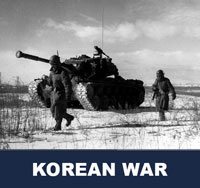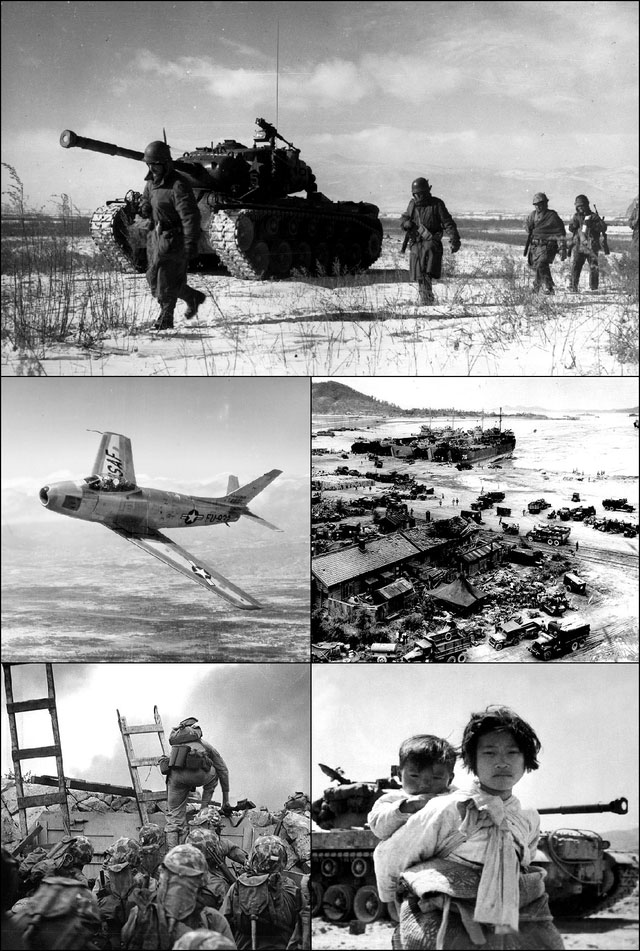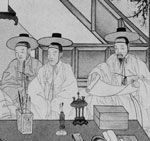Taekwondo 태권도Taekwondo Preschool
Joseon was a Korean state founded by Taejo Yi Seong-gye that lasted for approximately five centuries, from July 1392 to October 1897. It was founded following the aftermath of the overthrow of the Goryeo Dynasty in what is today the city of Kaesong. Early on, Korea was retitled and the capital was relocated to modern-day Seoul. View Joseon Era 조선 »

Korean War
The division of Korea into South Korea and North Korea was the result of the 1945 Allied victory in World War II, ending the Empire of Japan's 35-year colonial rule of Korea by General Order No. 1.
This division of Korea, after more than a millennium of being unified, was seen as unacceptable and temporary by both regimes. From 1948 until the start of the civil war on June 25, 1950, the armed forces of each side engaged in a series of bloody conflicts along the border. In 1950, these conflicts escalated dramatically when North Korean forces invaded South Korea, triggering the Korean War. The Korean Armistice Agreement was signed three years later ending hostilities and effectively making the division permanent. The two sides agreed to create a four-kilometer wide buffer zone between the states, where nobody would enter. This area came to be known as the Demilitarized Zone or DMZ.

The Korean War (25 June 1950 – 27 July 1953) was a war between South Korea and North Korea, in which a United Nations force led by the United States of America fought for the South, and China fought for the North. The war arose from the division of Korea at the end of World War II and from the global tensions of the Cold War that developed immediately afterwards.
Korea was ruled by Japan from 1910 until the closing days of the war. In August 1945 the Soviet Union declared war on Japan and, by agreement with the United States, occupied Korea north of the 38th parallel. U.S. forces subsequently occupied the south. By 1948 two separate governments had been set up: a Communist government in North Korea and a right-wing government in South Korea. Both governments claimed to be the legitimate government of Korea and neither side accepted the border as permanent. The conflict escalated into open warfare when North Korean forces, supported by the Soviet Union and China, invaded South Korea on 25 June 1950. On that day, the United Nations Security Council recognized this North Korean act as invasion and called for an immediate ceasefire. On 27 June, the United Nations Security Council adopted S/RES/83 : Complaint of aggression upon the Republic of Korea and decided the formation and dispatch of the U.N. Forces in Korea. The United States and other countries moved to defend South Korea.
Outmaneuvered and suffering heavy casualties in the first two months of the conflict, South Korean forces were forced back to the Pusan perimeter. Twenty-one countries of the United Nations contributed to the defense of South Korea, with the United States providing 88% of the soldiers. An amphibious U.N. counter-offensive at Inchon was launched which cut off many of the North Korean attackers. Those that escaped envelopment and capture were forced back north all the way to the Yalu River at the Korea-China border, or into the mountainous interior. At this point Chinese forces crossed over the Yalu and entered the war on the side of North Korea. Chinese intervention rapidly forced the United Nations Command back into South Korea, and the last two years of the war saw stalemate and attrition warfare. The fighting ended on 27 July 1953, when the armistice agreement was signed. The agreement established a new border between the Koreas close to the previous one and created the Korean Demilitarized Zone (DMZ), a 2.5-mile (4.0 km)-wide fortified buffer zone between them. Border incidents have continued to the present.
The war has been seen both as a civil war and as a proxy conflict in the Cold War between the United States and the Soviet Union. While not directly committing forces to the conflict, the Soviet Union provided strategic planning, weapons and material aid to both the North Korean and Chinese armies. From a military science perspective, the Korean War was initially fought using the mobile operations of World War II, but after the first year the conflict settled down into a holding operation while an armistice was argued over, and the static tactics of World War I trench warfare became the norm for the last two years of the conflict. The war also saw the first combat between jet aircraft, such as the F-86 Sabre used by the UN and the MiG-15 used by the Chinese, in warfare.

Korea ( 한국 )
Korea ( 한국 ) called Hanguk in South Korea and Chosŏn in North Korea, is an East Asian territory that is divided into two distinct sovereign states, North Korea and South Korea. Located on the Korean Peninsula, Korea is bordered by China to the northwest and Russia to the northeast. It is separated from Japan to the east by the Korea Strait and the Sea of Japan (East Sea). For more information View Korea ( 한국 ) »
RESOURCES
This article uses material from the Wikipedia articles "Division of Korea" and "Korean War", which is released under the Creative Commons Attribution-Share-Alike License 3.0.









